Written by: Karen Tartick, PT, who practices in the Durham Public Schools in Durham, NC. Karen has served as a member of the Autism subcommittee of the School Based Physical Therapy Special Interest Group, and co-authored the Autism Spectrum Disorder Guide for parents on the Move ForwardPT website, the APTA’s consumer webpage. Catch Karen and her Apply EBP workshops in-person or online. More about these courses after the article.
Are your interventions translating into improved participation and performance during the school day? If your answer is “no” or “not sure”, this may be the right article for you.
Team collaboration which facilitates functional integrated goals has been supported by research to promote participation throughout the school day (Palisano et al 2012; Bose &Hinojosa 2008; Villeneuve 2009; Wynarczuk et al 2017).
In 2 separate surveys conducted by Effgen & Kaminker (2014) and Thomazon & Wilmarth (2015), therapists indicated that it is best practice to integrate services into the classroom. However, the same therapists surveyed indicated providing mostly “pull-out” services. Giangreco (1996) advocates services being “only as special as necessary”; teachers feel more supported when therapists collaborate on goals and are present in the classroom.
Team collaboration and integrated services are challenging for many school-based therapists, including myself. In my many years of practice, I have learned that integrating therapy services into the educational setting is like building a structure. In order to enjoy the reward at the end, you must lay the groundwork.
With that in mind, I have come up with what I refer to as my “TOP 10 GOTTA BEs” for successfully integrating my services into the educational setting. These work just as well in pre- and elementary school as they do in middle and high school. They are effective in the regular classroom, art room, media center, cafeteria, PE, recess or wherever the student may be.
I found that to reap the rewards of improved student participation and performance during the school day, I GOTTA BE all of these things. As an added bonus, it has also increased my sense of fulfillment as a school-based therapist.
1. BE an Equal Partner
The success of what we do as school-based therapists is contingent upon being an equal team member. I respect the roles and responsibilities of the teacher and other team members. I value the feedback I receive from the educators. Besides, they often have more contact with the student throughout the school day than I do.
I am continually asking parents and my fellow professionals about the students’ goals and activities. I am committed to learning the best way to ensure that the goals of the students, teachers and families are being met. I do not interfere or judge. I collaborate to come up with interventions that will work in the class setting.
2. BE Respectful of the Teacher’s Schedule
I make every effort to try to avoid interfering with a teacher’s core learning time. At the beginning of the year, I collect all of the teacher’s schedules to find a good time to see the student and not diminish, decrease or intrude upon the student’s learning time.
The teacher can be invaluable in determining when the student is struggling the most, and when my interventions will provide the most help to both the teacher and student. I am not there for my convenience, but for the student’s needs. This is not easy, but I assure you given the effort, it CAN work, and the pay-off is so rewarding.
3. BE a Good Communicator
It is crucial to establish the most effective communication system between the therapist and the teacher(s). Teachers rely on me to be a resource; therefore I must be available, approachable, and consistent. This can be through email, phone calls, texting – whatever will work for the teacher.
If I cannot be where I am scheduled to be, it is very important to let the teacher know as they often count on me to be there. This builds a trusting relationship.
Communication should be ongoing – I check in frequently via email or texting with teachers of students, especially if they are on a consultative model.
4. BE Available
Teachers appreciate that I am there in the natural setting, whether it be the art room, cafeteria, PE class, recess or wherever the real-life obstacles are encountered.
For example, if I am working with a student to facilitate walking with an assistive device, stepping up and down curbs, or using stairs, I collaborate with the teacher to determine the best setting or time that works for all. If the student cannot climb the stairs on the bus, I need to make sure I am available to help at arrival or dismissal time.
The teacher will appreciate that I am acknowledging where the difficulty is occurring, and the student will learn within the context of the environment. I need to be flexible enough to be available when a problem (whether anticipated or unexpected) occurs.
5. BE a Reliable Resource
Many of our regular education teachers feel overwhelmed when a student with multiple needs is assigned to their classes. Even with the increased awareness of inclusion, teachers are not prepared for or are intimidated by a student with a physical disability.
Therefore, an important part of my job is to provide the support and necessary resources to help facilitate successful transition of the student into the classroom.
I can explain a diagnosis, making it about the student. By doing so, the teacher sees the student first, and the disability second. I provide resources or bring a piece of equipment as quickly as possible to address the students’ and the teachers’ needs right away.
Again, this shows the teacher I am responsible and dedicated to making sure I am supporting her as s/he works with the student. I am there to show them that this can work, and I will do my best to provide every resource to be sure the student can succeed.
6. BE Invisible
My presence in the classroom should not be an interruption. I enter quietly, and never interrupt what is naturally occurring. I establish a routine so that it becomes familiar to the teacher and all the students.
I seamlessly work with the student supporting what is naturally occurring during the class activity. I can be working on a skill with a student, say transferring from the floor to a chair after circle time, without distracting other students – because they see me as “just another teacher” helping out.
If I need to talk with the teacher, I will either wait for a quiet moment or send an email or text later.
7. BE Helpful, Above and Beyond
When I am working in a classroom, and I see that there is something with which I can help with, I do not hesitate to provide it.
For example, I may be facilitating a student sitting at a shared table and one of her peers needs help. I help out as far as I am able to. This shows the teacher that I am a team player.
It also serves to model to all students, with or without disabilities, the importance of working together. It is never too early to start demonstrating that children with disabilities are equal peers.
8. BE Reciprocating
Much of what we do as school therapists need to be reinforced daily by other members of the team. For this to happen, I am responsible for knowing and understanding what the child’s goals are in all areas, not just the goals that relate to me as the PT.
I then reinforce academic, OT, or speech goals whenever I can. By demonstrating my willingness to address the whole child, the teacher is much more likely to reciprocate and work on the activities that s/he has seen me practice.
For example, after observing me as I transfer a student into a stander, the teacher is much more likely to be willing to follow through on my recommendations. I am often greeted at the door by teachers who are proud that they have made sure the student has used a new walker, and we have a shared joy in the accomplishment.
9. BE Accountable
I am responsible for all necessary paperwork to be on time, to be present at IEP meetings, to meet the frequency of services according to the IEP, and to follow through on my promises. This includes phone calls to parents, doctors, or other providers; ordering and maintaining equipment; and writing letters of medical necessity.
When I demonstrate my accountability, teachers see me as an asset, not an extra burden.
10. BE Enthusiastic
I personally feel that enthusiasm is the most important quality we bring to the classroom. Enthusiasm shows a belief in the possibilities, a genuine regard for the student and a passion for life and our careers.
Enthusiasm translates to a positivity that impacts everyone around us. Yes, our skill set is valuable – but without enthusiasm, we cannot motivate and inspire others.
Everyone feels tired, stressed, or burned out on occasion. After all, we are human. However, as I enter the school, these feelings must be left in the car.
As I participate with the student and his peers, I make it a point to be enthusiastic and positive. This is the time for the student, not me. I make it a point to enter a classroom with a positive energy, and often I am rewarded by transferring that positivity to others who may be struggling.
Join the author, Karen and her colleagues in her Apply EBP courses
References:
Bose, P., Hinojosa, J. (2008). Reported experiences from occupational therapists interacting with teachers in inclusive early childhood classrooms. American Journal of Occupational Therapy, 62,289-297.
Giangreco, M. F., Prelock, P. A., Reid, R. R., Dennis, R. E., & Edelman, S. W. (1999). Roles of related service personnel in inclusive schools. In R.A. Villa & J.S. Thousand (Eds.), Restructuring for caring and effective education: Piecing the puzzle together (2nd ed., pp. 360-393). Baltimore: Paul H. Brookes.
Effgen, S.K., Kaminker, M.K. (2014). Nationwide Survey of School-Based Physical Therapy Practice. Pediatric Physical Therapy. 26(4), 394-403.
Palisano, R., Chiarello, L., King, G., Novak, I., Stoner, T., Fiss, A. (2012). Participation-based therapy for children with physical disabilities. Disability and Rehabilitation, 34(12), 1041-1052.
Sekerak, D.M., Kirkpatrick, D.B., Nelson, K.C. & Propes, J.H. (2003). Physical therapy in preschool classrooms: Successful integration of therapy into classroom routines. Pediatric Physical Therapy, 15(2), 93-104.
Thomason, H.K., Wilmarth, MA. (2015). Provision of School-Based Physical Therapy Services: A Survey of Current Practice Patterns. Pediatric Physical Therapy. 27(2), 161-169.
Villeneuve M. (2009). A critical examination of school-based occupational therapy collaborative consultation. Canadian Journal of Occupational Therapy, 76(1), 206-218.
Wynarczuk, K.D., Chiarello, L.A., Gohrband, C.L. (2017). Goal Development Practices of Physical Therapists Working in Educational Environments. Physical & Occupational therapy in Pediatrics, 37(4), 425-443.
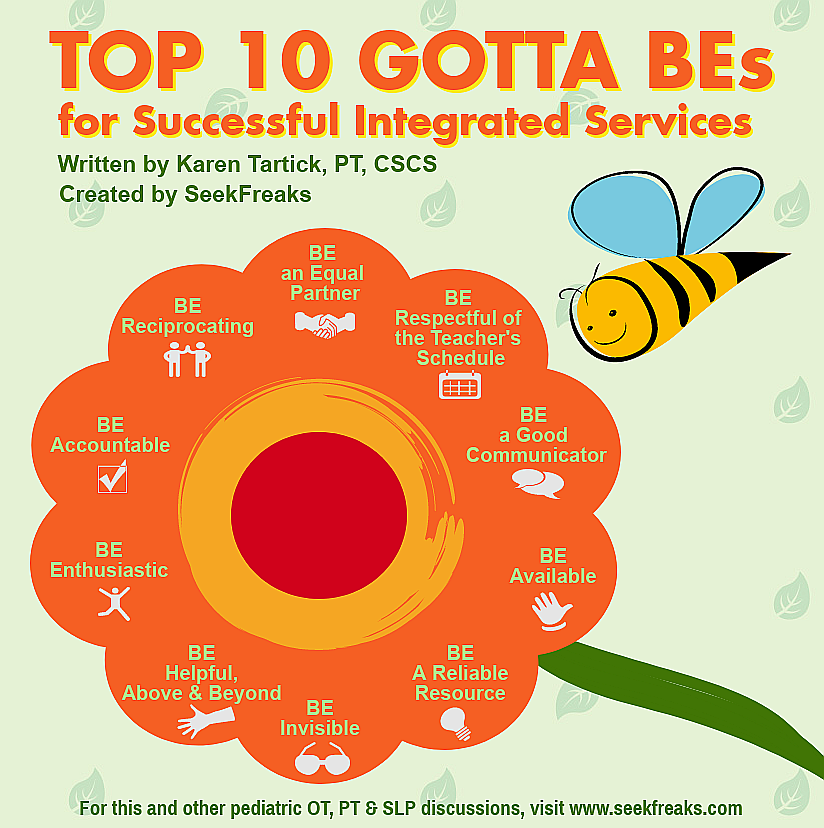
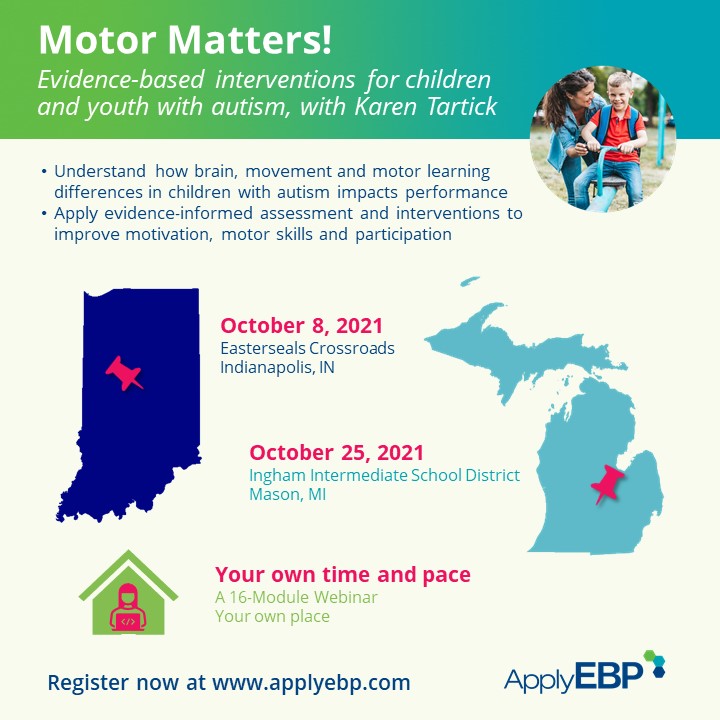
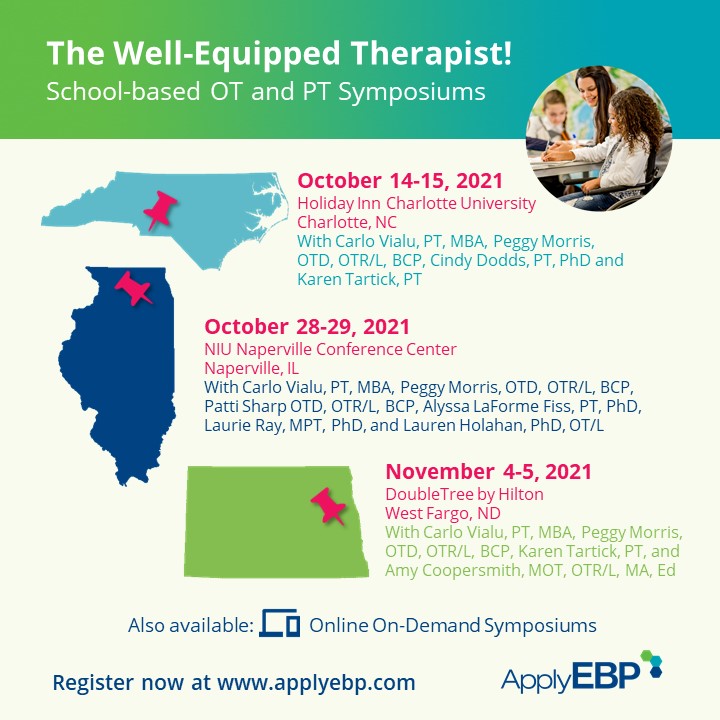
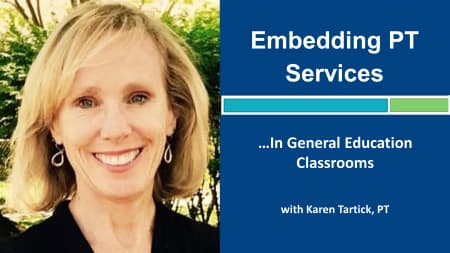

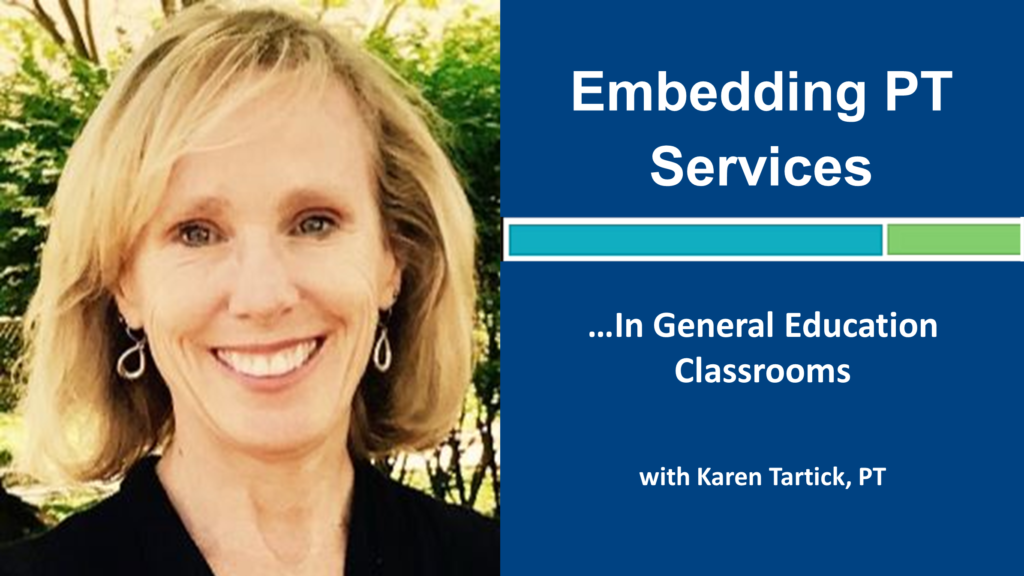
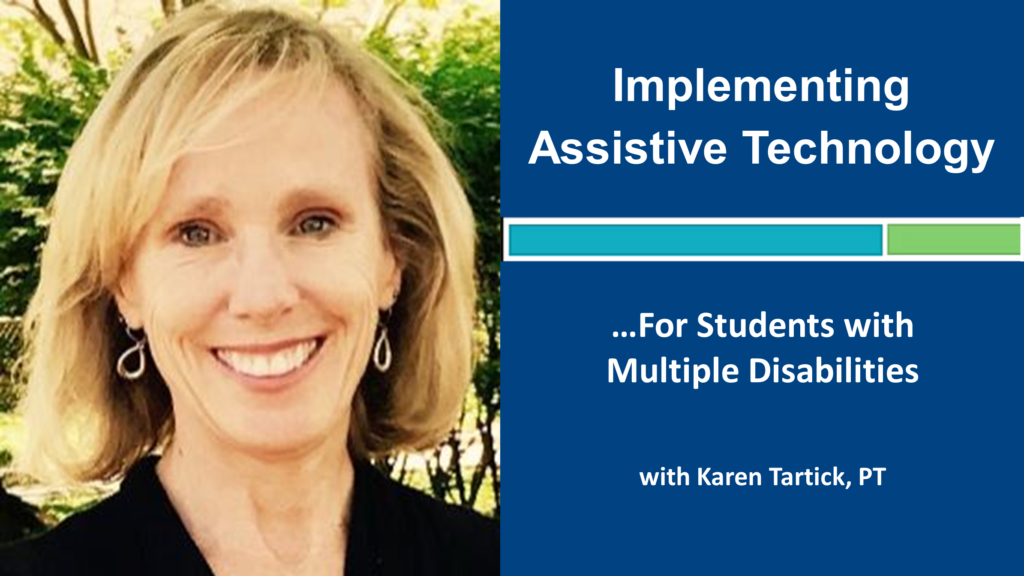
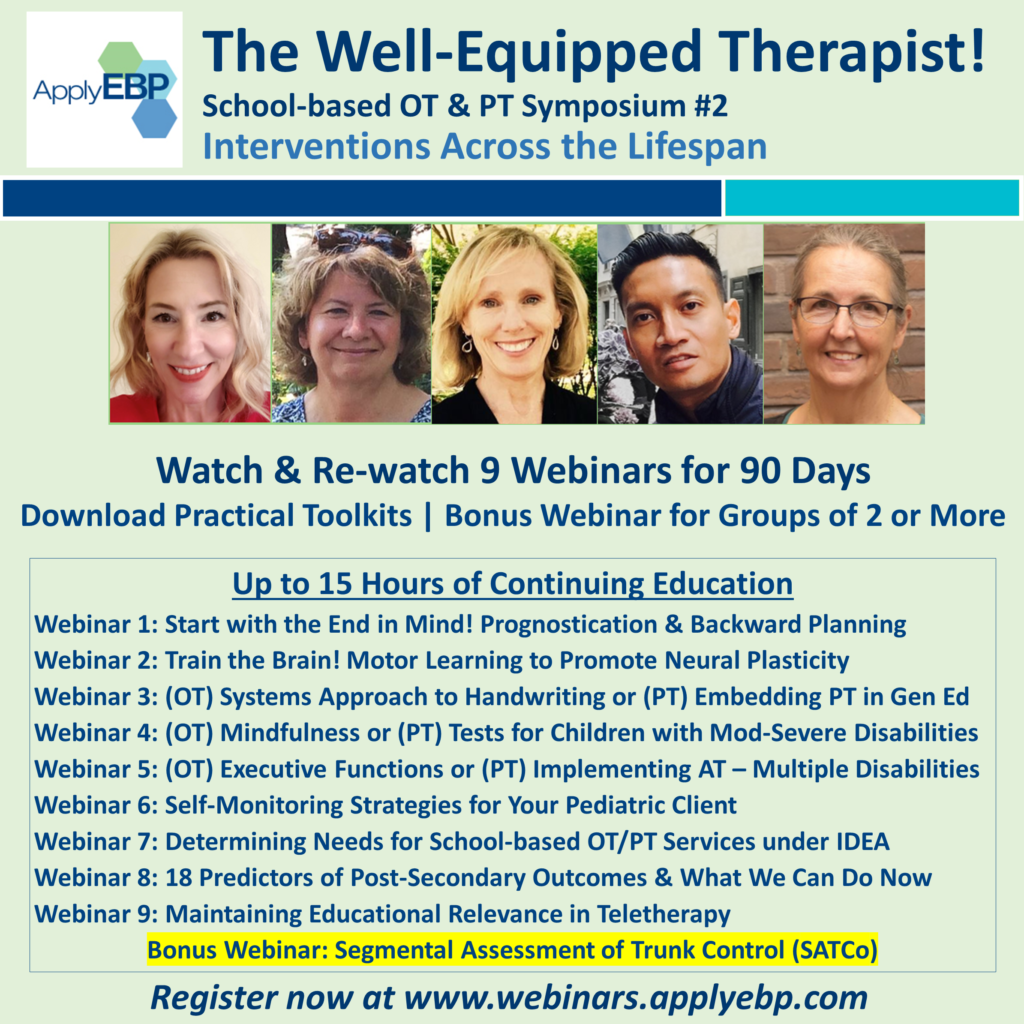











January 25, 2018 at 2:49 pm
What a great post! I always want to integrate, but it is a struggle. It requires persistent effort, consistent communication and a long term agenda to integrate. I love these tips! I’m going to work on being invisible, definitely not my strong suit! And I did not really think about the GenEd teachers. They are key folks that need support.
Karen, I find it easy to integrate into transitions, PE and recess. Sometimes I feel I have to wait for a teacher to have a problem to address to get into class routines. Do you have any suggestions on being more proactive?
Thank you for sharing your tips. I hope they will help me BE more effective, to intervene in the way we all KNOW is best!